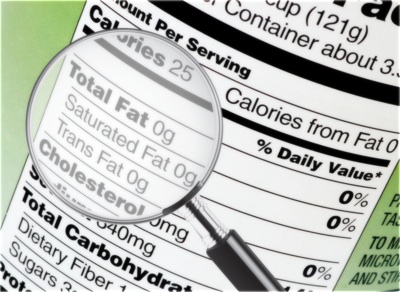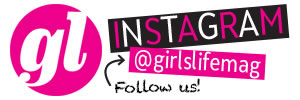HEALTH
Eat Right
Sneaky tricks nutrition labels pull...and how to see through them

If
you’ve ever been confused while reading a food label, you’re not alone.
Some foods can seem low in calories, but might sneakily have unhealthy
amounts of fat and sugar. Here’s what you should really be looking at
when you’re narrowing down your options.
Serving Size
Sometimes a food is so low in calories that it seems too good to be
true. Before you assume that your next nosh is good for you, take a look
at the serving size and servings per container. For individually
packaged foods like oatmeal and microwavable macaroni, a serving size is
usually just one package. But watch out for things like chips, which
can have a serving size of just a handful! To help yourself stay on
track, put snacks like these in plastic baggies so you don’t eat more
than you need.
Fat
Under the calories section of a food label, there is a subsection
labeled calories from fat. Foods will always have more calories than
calories from fat, but you should eat more foods that are lower in
calories from fat. This is separate from the total fat label, which
tells you how many grams of fat are in your food. Not all fats are bad
for you, though, so don’t flock to only fat-free snacks. The better
thing to do is minimize the amount of saturated fat you eat since this
is the kind that can hurt your heart.
Sodium
Unlike fats, there isn’t a “healthy” kind of sodium, which is the amount
of salt in your food. Your body needs sodium to run, but too much of it
can cause high blood pressure. A healthy amount of sodium is less than
2,000 mg a day. This can be hard because processed foods are packed with
sodium, and they are usually the easiest foods to whip up in a jiffy.
If you usually munch on frozen food or frequent the drive-thru, make an
effort to add more fresh produce into your diet. You can never have
enough fruits and veggies!
Carbohydrates
Like fats, there are also good and bad carbs, and like sodium, processed
foods are usually full of the bad kind. Complex carbs are the good
ones, and you can find them in whole grains like pasta and whole wheat
bread, or in good starches like potatoes (but not French fries!). Simple
carbs are usually stocked in junk food, and all they do is add calories
to your diet without any other nutritional value. So limit the chips
and cookies!
Protein and Vitamins
Protein is a number you want to be high on your food label since it’s
what gives you energy and helps you grow stronger. At this time in your
life, it’s especially important to be getting lots of it, so get yours
from meat, dairy, soy foods, and beans. The rest of the food label tells
you the percent daily value of the vitamins in your meal, so the higher
the percentage, the more nutritional value you are getting.
Use these tips to help you out the next time you read a food label, but
don’t stress too much about the numbers you’re ingesting. Instead, look
at the types of food you are eating and make sure you have balance and
good portion size in all your meals. Are your meals made up mostly of
fresh and colorful foods that aren’t highly processed? This is what will
help you achieve the best balance in your diet.
Love this post? You’ll heart these too…
+ Land a fab bod the lazy way. Sign up here for our weekly health ‘n’ fitness newsletter
+ No tricks here! 8 easy exercises for Halloween
+ 4 yummy ways to nom on pumpkin in the a.m.
WIN IT! Step into fall with a $1200 stash of ah-mazing boots.
INSTA-LOVE! Everything you heart about GL is now on Instagram!
POSTED IN body, eating, healthy eating 101, how to cut out junk food, health, nutrition

 become a contributor
become a contributor


















